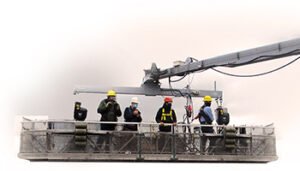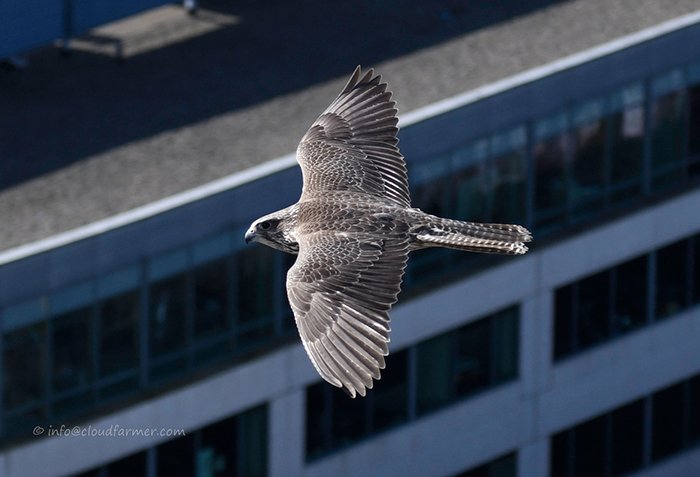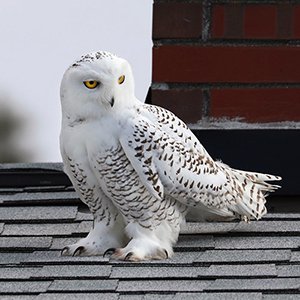2021 Annual Report
Dear Friends,
Has it really been four years since Urban Raptor Conservancy embarked on this odyssey? We are in awe of what we have accomplished and humbled by what potential remains to be realized. Here is a summary of our work this year.
Seattle Cooper’s Hawk Project
Ed Deal and Martin Muller completed their tenth year leading the project. The Seattle Cooper’s hawk population continues to expand. Despite the unprecedented heat wave in June, at the worst possible time (early nestlings), the Coops again posted record numbers in nest-building pairs (69), successful pairs (52), fledglings (192), band sightings (162), and birds banded (75). Unfortunately, we also set a record for nest failures (17).
Ed Deal published the first extensive review of Cooper’s hawks in our region: The Cooper’s Hawk: history and current status in Washington. Washington Birds, 13:81-96. https://wos.org/documents/ Publications/WA%20Birds/2021/ Washington-Birds-Journal-Vol-13. pdf

Martin Muller banding a Cooper’s hawk (Jeff Graham)

Above: Peregrine banding at 1201 3rd Ave, Seattle (Ed Deal)
Puget Sound Peregrine Project
This project is now in its 28th year, beginning with the first urban nest in Seattle in 1994. Our city-nesting peregrines continue to suffer high mortality from window hits and drowning. The flagship downtown Seattle nest lost two of four fledglings to window collisions. Likewise, at the downtown Tacoma nest, both fledglings died from window hits. One of three fledglings from the 520 Portage Bay nest drowned; the other two did not drown only because of constant vigilance on the water during fledging by URC volunteers. The shining successes this year were the West Seattle bridge nest (another high-risk drowning site), which fledged four, and the Bradken site in Tacoma, which fledged three.
Rodenticides in Raptors Study
In a collaborative effort with PAWS Wildlife Center, we have tested 125 dead raptors for anticoagulant (blood-thinning) rodenticides: red-tailed hawks, Cooper’s hawks, and five species of owls (barred owl, barn owl, great horned owl, Northern saw-whet owl, Western screech-owl). Most tested positive for exposure to anticoagulants.
Thanks to the generosity of our donors, we were able to launch Phase 2 of this study:
- In addition to testing for anticoagulants, we will test for one alternative to anticoagulants, the neurotoxin bromethalin.
- We are testing three new species: bald eagles (requiring a special federal permit), peregrine falcons, and merlins.
- Falcons are considered bird eaters, but recent evidence elsewhere has identified rodenticides in these species as well.

Gyrfalcon in downtown Seattle, winter 2021 (Urban Raptor Conservancy, with photographer’s permission)
Rare Raptor Visitors
Urban Gyrfalcon
An unprecedented visitor, a one-year-old gyrfalcon, took up winter residence in downtown Seattle. First spotted by its anonymous finder on Christmas Eve 2020, it was thought to be a juvenile peregrine until Urban Raptor Conservancy was eventually contacted and confirmed its identity. The gyrfalcon was seen regularly until 28 May 2021, hunting pigeons among the high-rise condos and engaging in aerial territorial squabbles with the downtown peregrines and other raptors. Over its five-month residence, the gyr noticeably improved both its urban hunting skills and its confidence in raptor challenges. As best as we can determine, this is the first record of an overwintering urban gyrfalcon in the lower 48 states.
Snowy Owl
In case you were hibernating and missed it, a snowy owl spent last winter in Seattle. After initial wanderings around town, it settled on Queen Anne Hill and remained for over four months. With the invaluable help of Elaine Chuang, Martin collected 29 pellets that the owl cast onto rooftops and beneath roost trees. Rodent bones were abundant in the pellets. We sent a few of these for toxicology testing and—surprise—found evidence of anticoagulant rodenticides. We will report the results in 2022.

Snowy owl in West Seattle, 2021 (Larry Gilpin)
Window Hits
Sadly, we have seen instances of a raptor chasing a bird into a window, resulting in the deaths of both predator and prey. This pigeon and juvenile Coop, positioned as they were found, was photographed this past summer on a downtown Seattle rooftop. More on this in a future newsletter.
Looking Ahead
In 2022, we will do it all over again. We will continue:
- Long-term raptor population studies. Field seasons officially start in March (Cooper’s hawk, peregrines, merlins), but we are already seeing signs of courtship.
- Banding programs in the field and at PAWS.
- Rodenticides in Raptors study: analyze and publish the results from phase 1, complete testing of phase 2, and report on the rodenticide analysis of snowy owl pellets.
- Broaden and train our base of dedicated volunteers.
We at Urban Raptor Conservancy are committed to protecting raptors and documenting our work. Just as importantly, we share our passion for raptors in our dynamic urban environment, and we welcome stewards and observers throughout the region, including our many encounters with you in the field.
Our deepest gratitude to our two 2021 grant supporters, Patagonia and the Peter Mason Family Charitable Trust, as well as the over 100 individual donations that help sustain us. Thanks to all of you—donors, dedicated volunteers, and keen-eyed observers—for your shared faith and contributions to our mission. You make our tiny organization larger by supporting our efforts and adding to our collective knowledge of our region’s urban raptors. Your contributions of all kinds sustain us.
Ed Deal
Patti Loesche
Martin Muller
Urban Raptor Conservancy
